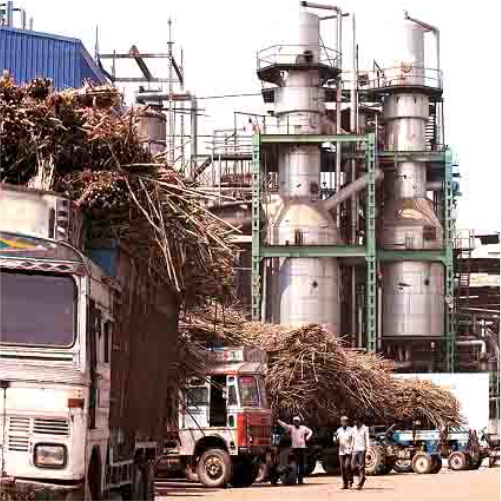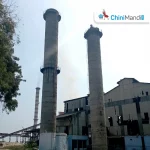The sugar industry, while vital for our daily lives, generates significant volumes of wastewater laden with pollutants. Traditional treatment methods often struggle to handle the complex composition of this effluent. However, a novel technology called TADOX (UV Photocatalysis based Advanced Oxidation Technology), developed by The Energy and Resources Institute (TERI) in India, offers a promising solution.
What is TADOX and How Does it Work?
TADOX harnesses the power of ultraviolet (UV) light and photocatalysts to degrade pollutants in wastewater. This Advanced Oxidation Process (AOP) breaks down complex organic molecules into simpler, more biodegradable forms. This significantly improves the biodegradability of the effluent, making it easier for subsequent biological treatment stages to remove pollutants.
Benefits of TADOX for Sugar Industry Wastewater Treatment:
Enhanced Treatment Efficiency: TADOX can be integrated at various stages of the treatment process, leading to improved overall effluent quality.
Pre-treatment: Reduces COD, toxicity, and color, making the effluent more amenable to biological treatment.
Post-treatment: Removes residual pollutants like COD, BOD, and odor, ensuring the treated water meets discharge and reuse standards.
Reverse Osmosis (RO) Performance Enhancement: TADOX prevents bio-fouling of RO membranes, extending their lifespan and efficiency.
Economic and Environmental Advantages:
Cost-Effectiveness: TADOX aims to significantly reduce capital and operating expenses compared to conventional methods.
Resource Efficiency: By minimizing the need for additional treatment steps and reducing chemical usage, TADOX promotes resource conservation.
Environmental Sustainability: TADOX helps achieve Zero Liquid Discharge (ZLD) and promotes water reuse, aligning with sustainable water management practices.
Reduced Greenhouse Gas Emissions: The technology offers a lower carbon footprint compared to traditional treatment methods.
TADOX vs. Traditional Technologies:
TADOX offers several advantages over conventional wastewater treatment methods:
Enhanced Biodegradability: Effectively reduces COD and toxicity, overcoming limitations of traditional biological treatment.
Advanced Oxidation: Breaks down complex pollutants more efficiently than conventional methods.
Cost Savings: Aims for significant reductions in capital and operating expenses.
Reduced Chemical Usage: Minimizes reliance on external chemicals, lowering operational costs and environmental impact.
Sustainability: Promotes ZLD and water reuse, addressing growing water scarcity concerns.
Success Story: Textile Industry Example
A recent pilot project by TERI demonstrates the effectiveness of TADOX in treating industrial wastewater at Common Effluent Treatment Plants (CETPs). The project successfully treated 20,000 liters per day of effluent from a textile CETP in Kanpur, achieving significant reductions in pollutants and colorless discharge. This technology offers a cost-effective and sustainable solution for CETPs in various industries, including sugar manufacturing.
Future Outlook:
While a relatively new technology, TADOX offers immense potential for the sugar industry. Its ability to deliver efficient, cost-effective, and environmentally friendly wastewater treatment positions it as a game-changer for sustainable sugar production.
Challenges and the Road Ahead:
Despite its advantages, TADOX faces some challenges. Industry inertia towards new technologies and the need for skilled personnel for maintenance are potential roadblocks. However, increasing environmental regulations and the growing market for advanced wastewater treatment technologies present significant opportunities for TADOX. Continuous innovation and adaptation will be crucial to ensure its long-term success.
A simplified explanation of how it works:
1. Photocatalysis: The process begins with photocatalysts, which are substances that become activated upon exposure to UV light. In the case of TADOX, titanium dioxide (TiO2) is commonly used as the photocatalyst.
2. UV Light Activation: When UV light from a source, such as UV lamps, shines on the photocatalyst, it energizes the catalyst, creating electron-hole pairs.
3. Production of Reactive Species: These energized electrons and holes react with water and oxygen present in the wastewater to produce reactive species like hydroxyl radicals.
4. Degradation of Pollutants: These highly reactive species attack and break down complex organic molecules and pollutants in the wastewater into simpler, non-toxic compounds, which are more biodegradable.
5. Mineralization: Eventually, the process leads to the mineralization of these compounds, turning them into water, carbon dioxide, and other harmless substances.
6. Enhanced Biodegradability: The treated water, now with reduced Chemical Oxygen Demand (COD) and Biological Oxygen Demand (BOD), becomes more amenable to biological treatment, which is often a subsequent stage in wastewater treatment plants.
7. Integration with Existing Systems: TADOX can be integrated at various stages of the wastewater treatment process, either as a pre-treatment or post-treatment solution, enhancing the overall efficiency of the treatment system.
Conclusion:
TADOX offers a revolutionary approach to wastewater treatment in the sugar industry. Its ability to address environmental concerns while promoting cost-effectiveness and resource efficiency makes it a compelling solution for a sustainable future. As the technology matures and gains wider acceptance, TADOX has the potential to transform the sugar industry by ensuring cleaner production processes and responsible water management.
Disclaimer: The views and opinions expressed in the article by Dilip Patil, Managing Director of Samarth SSK Ltd., are solely his own.












